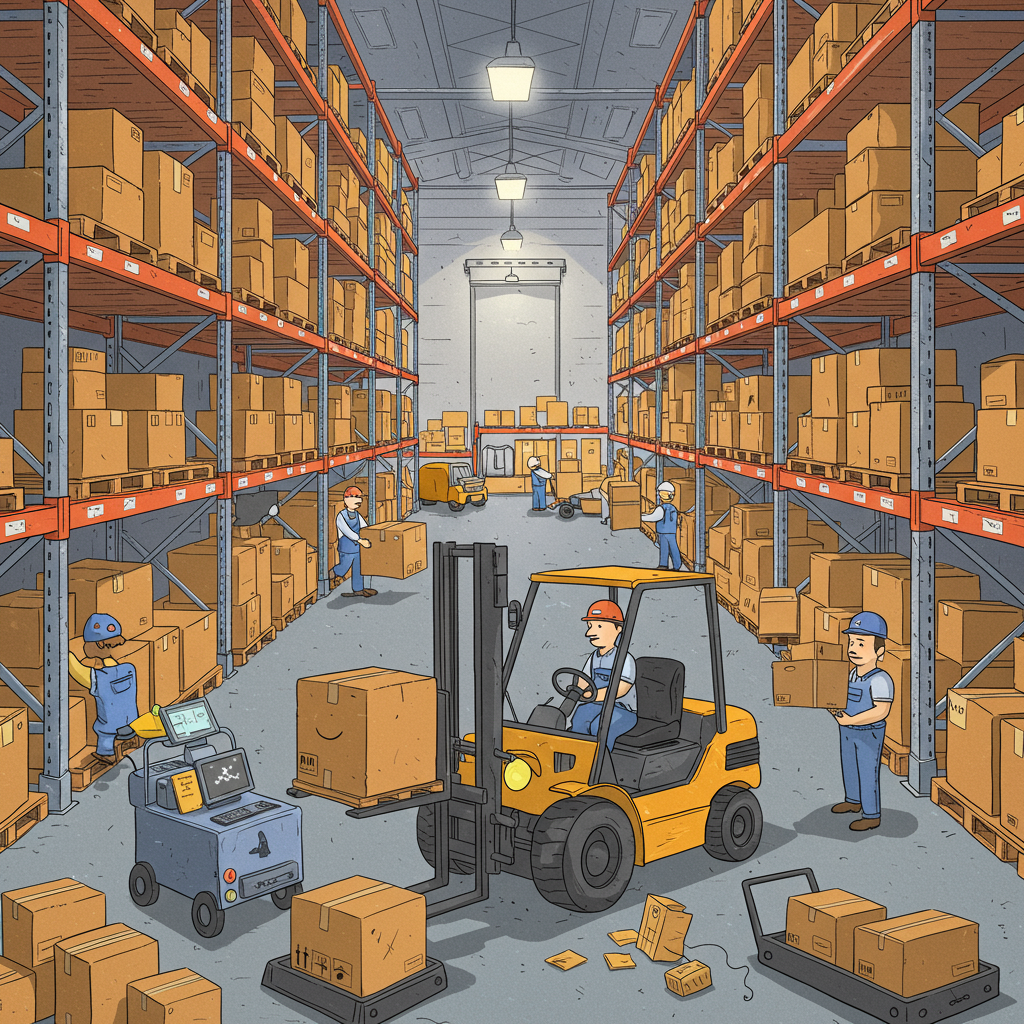From Personal Experience: How I Found the Right Logistics Partner to Scale My E-commerce Business
As a Shopify merchant, I’ve personally experienced the exhilarating highs of a successful product launch and the daunting lows of trying to keep up with order fulfillment.
There was a time when my spare room was overflowing with inventory, and my evenings were spent printing labels, packing boxes, and making trips to the post office.
It was a labor of love, but it was also a bottleneck. I quickly realized that if I wanted my business to truly scale, I couldn’t do it all myself.
That’s when I started seriously looking into Third-Party Logistics, or 3PL, services. For me, it wasn’t just about offloading tasks; it was about strategically partnering to unlock growth.
A 3PL essentially handles all aspects of your warehousing, inventory management, and order fulfillment, from the moment your products arrive at their facility until they reach your customer’s doorstep.
It’s like having a dedicated, professional logistics team without the overhead of hiring staff, leasing warehouse space, or investing in expensive equipment.
The benefits of integrating a 3PL with my Shopify store became apparent almost immediately. First and foremost, it freed up an incredible amount of my time.
Instead of packing orders, I could focus on product development, marketing, and customer engagement – the core activities that truly drive my business forward.
Secondly, there were significant cost savings. While it might seem counterintuitive to pay someone else, 3PLs operate on economies of scale.
They get better shipping rates, have optimized processes, and can manage inventory more efficiently than I ever could on my own.
Scalability was another huge win. During peak seasons or unexpected sales spikes, I no longer had to worry about being overwhelmed.
My 3PL partner could easily handle increased order volumes, ensuring my customers received their products on time, every time.
They also brought a level of expertise I simply didn’t possess. From navigating complex shipping regulations to optimizing delivery routes, their knowledge was invaluable.
This expertise directly translated into improved customer satisfaction. Faster, more reliable shipping meant happier customers and fewer support inquiries related to delivery.
When I began my search for the best 3PL for my Shopify store, I quickly learned that not all services are created equal. My first and most critical consideration was seamless integration with Shopify.
A good 3PL should have robust, real-time integration that automatically syncs orders, inventory levels, and tracking information, minimizing manual work and errors.
Next, I looked at their location and network. Having warehouses strategically located closer to my customer base meant faster shipping times and often, lower shipping costs.
Their pricing structure was also a major factor. I needed transparency. I looked for clear breakdowns of storage fees, pick and pack charges, shipping costs, and any additional fees for returns or special handling.
The technology and software they offered were equally important. A modern Warehouse Management System (WMS) with a user-friendly portal allowed me to monitor inventory, track orders, and access reports from anywhere.
I also prioritized customer service and communication. I wanted a partner who was responsive, proactive, and ideally, offered a dedicated account manager who understood my business needs.
Some 3PLs specialize in certain product types, like fragile goods, apparel, or cold storage. While my products weren’t highly specialized, I considered this for future expansion.
Efficient returns management was another non-negotiable. A smooth reverse logistics process is crucial for customer satisfaction and minimizing losses.
I needed a 3PL that could truly scale with me, not just handle my current volume. Their capacity for growth was a key indicator of a long-term partnership.
Finally, I thoroughly researched their reputation and read reviews from other Shopify merchants. Word-of-mouth and case studies provided invaluable insights.
Some of the top contenders I explored, and that many Shopify merchants find success with, include ShipBob, known for its extensive network and tech-forward approach.
Deliverr (now part of Shopify Fulfillment Network) also stood out for its focus on fast, two-day shipping capabilities, which is a huge draw for customers.
For businesses with heavy, bulky, or high-value items, Red Stag Fulfillment often comes up due to their accuracy guarantees and specialized handling.
Whitebox offers a more end-to-end solution, even venturing into marketing services, which can be appealing for brands looking for a comprehensive partner.
And for global reach, Flexport (formerly Shipwire) provides robust international fulfillment options, which I considered as my business expanded.
My process for vetting potential 3PLs involved defining my exact needs, researching multiple providers, requesting detailed quotes, and comparing them side-by-side.
I always recommend checking references and, if possible, starting with a trial period or a smaller volume to ensure a good fit before committing fully.
One common pitfall I learned to avoid was not fully understanding the pricing model. Hidden fees can quickly erode your margins.
Another was poor communication. A lack of clear, consistent communication can lead to costly errors and delays.
Ignoring the importance of seamless Shopify integration is also a mistake. Manual workarounds are inefficient and prone to human error.
And finally, underestimating the need for scalability can leave you scrambling when your business experiences rapid growth.
Choosing the right 3PL for your Shopify store is one of the most impactful decisions you can make for your e-commerce business.
It’s not just about outsourcing; it’s about strategic partnership that empowers you to focus on what you do best: building your brand and connecting with your customers.
I hope my insights from my own journey have been helpful for you. What are your thoughts on this article? Do you have any experiences with 3PLs you’d like to share?
By carefully evaluating your options and prioritizing key factors like integration, scalability, and transparency, you can find a partner that truly helps your Shopify store thrive.






